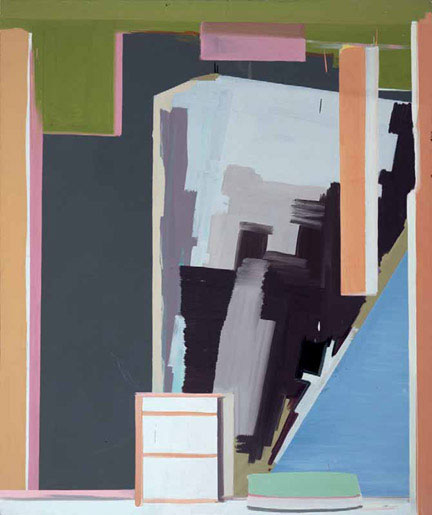Thomas Scheibitz, Untitled, 1995–96

The feeling of living in a world full of interchangeable personal narratives and uniform biographies is a commonplace in modernism. Not only is almost every region on earth characterised by identical consumer possibilities and choices; the general principles, aspirations, desires and dreams of humans across the globe have, moreover, long since been standardised by the pervasiveness of media communication.
Such an international language has also taken shape in art, a repertoire which no longer has to be questioned – and which has ceased to surprise, astonish or shock. At first glance, the painter Thomas Scheibitz works with an abstract formal canon, one which has engaged him for many years. However, in this context the clichés of the real world of things, which explicitly or implicitly crop up in many of his works, irritate. They disrupt the formal composition and corrupt the non-representational ‘purity’ of the painting. Collages are fashioned from shapes and slivers of reality, from references to art history and everyday culture.
The very act of painting a picture turns out to be the subject. How can one paint at all in a time of mass digital image production and manipulation? Seemingly by placing one’s finger in the wound that the fractured relationship between painting and the present has created.